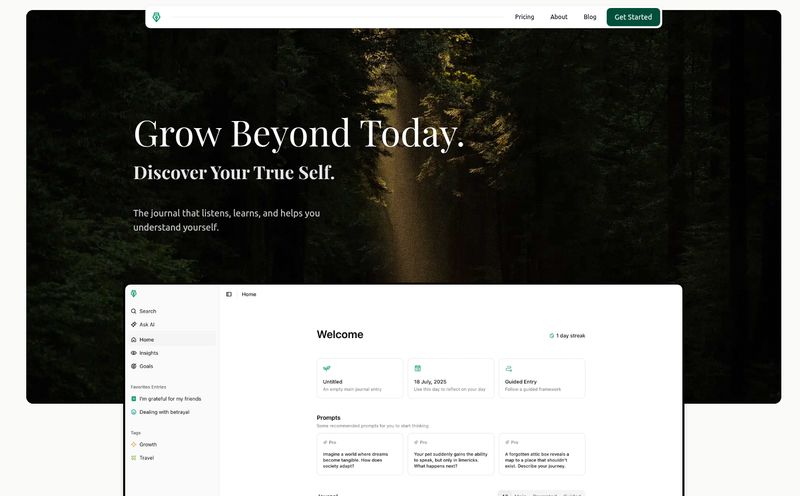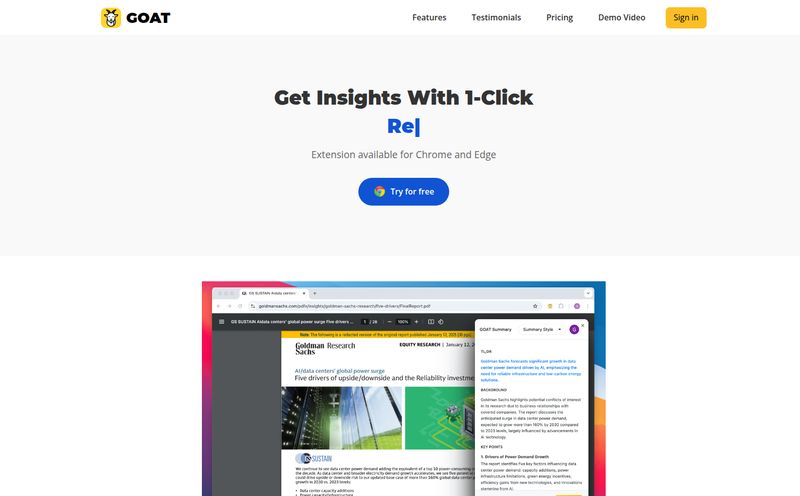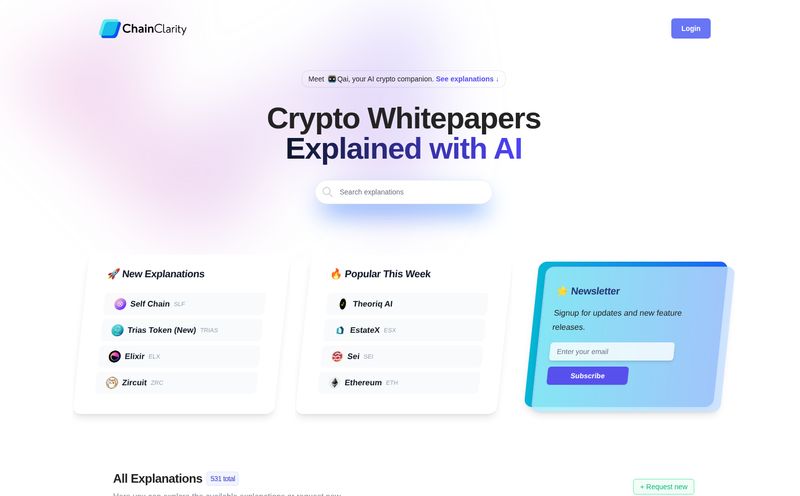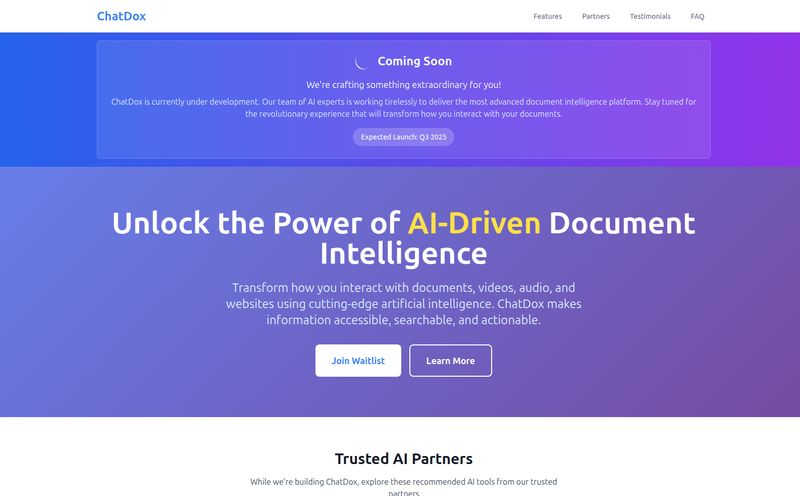If you’re in marketing, content creation, or really any field that involves a computer, your brain probably looks a lot like my browser right now: twenty-seven tabs open, three of them are playing audio I can't find, and one is just a white paper I swore I’d read three weeks ago. We’re drowning in information. And the hardest part? Trying to explain that complex information to someone else—a client, a boss, or our readers—without their eyes glazing over.
I've been in the SEO and traffic generation game for years, and I've seen the shift. Attention spans are… well, they’re not what they used to be. A wall of text, no matter how brilliant, is a tough sell. People want visuals. They need to see the data, the connections, the timeline. The problem is, most of us aren't graphic designers. We’re writers, strategists, and analysts. Firing up a complex design program to make a simple flowchart feels like using a sledgehammer to crack a nut.
So, when I stumbled across a tool called MyLens.ai, my professional curiosity was piqued. The tagline is “Visualize what matters with AI.” Okay, cool. Lots of tools claim to do that. But this one seemed different. It promised to take all sorts of content—PDFs, webpages, YouTube videos, even raw text dumps—and automagically turn them into interactive visuals. For free. That last part is what really got my attention.
So, What Is MyLens.ai, Really?
Think of MyLens.ai as a super-smart translator. But instead of translating from Spanish to English, it translates from ‘boring and complicated’ to ‘oh, I get it now!’. You feed it a source of information, and its AI chews on it for a moment before spitting out a visual representation. And we're not just talking about a static image.
It can generate:
- Mindmaps: To show the relationships between different ideas.
- Timelines: Perfect for historical data or project plans.
- Tables and Charts: For when you need to compare raw numbers.
- Flowcharts: To map out a process or a user journey.
The idea is simple, but powerful. It takes the heavy lifting out of structuring information, giving you a starting point that's already 90% of the way there. And did I mention it's interactive and editable? Yeah, that’s a big deal.

Visit MyLens
Putting MyLens to the Test: My Real-World Experiment
A shiny landing page is one thing. Actual performance is another. To see if MyLens could walk the walk, I decided to throw something truly awful at it: a 40-page, incredibly dense industry report on Q3 e-commerce trends. It was filled with jargon, stats, and long-winded paragraphs. The kind of document that makes you want to take a nap.
From PDF Nightmare to a Clean Mindmap
I uploaded the PDF, selected 'Mindmap' as my desired visual, and held my breath. A few seconds later, it was done. And I have to admit, I was impressed. It had correctly identified the main themes of the report—market growth, consumer behavior shifts, new technologies—and created main branches for each. From those branches, it pulled out supporting statistics and key concepts. It wasn't perfect, there were a couple of odd connections I had to tweak. But the ability to just click and drag nodes to fix them was incredibly intuitive. In about five minutes of light editing, I had a clean, presentable mindmap that summarized a document that would have taken me an hour to properly read and digest. That’s a win in my book.
It's moments like these that remind me why visual aids are so critical. The Nielsen Norman Group has been telling us for years that users pay close attention to information-carrying images. A good mindmap or chart isn't just decoration; it's a communication shortcut.
Okay, But Can It Handle a YouTube Video?
Next up, a YouTube link. I grabbed a recent video from a marketing conference about the future of AI in search. I was more skeptical about this one. How could it possibly understand spoken words and on-screen text? I asked it to generate a timeline. The result was a chronological breakdown of the speaker's main points, timestamped to the video itself. It pulled out key predictions and milestones mentioned by the speaker. Again, not flawless, but as a way to get the gist of an hour-long presentation in two minutes? Absolutely fantastic. It's a great feature for content research or for catching up on webinars you missed.
The Good, The Bad, and The AI
No tool is perfect, especially not a free one. After playing around with MyLens for a few days, here’s my honest breakdown.
What I Genuinely Liked
The biggest pro is the price tag: zero. This makes it accessible to literally everyone, from students to solopreneurs to teams at massive corporations. The barrier to entry is non-existent. The speed is another huge plus. The time it saves you from having to manually structure this information is its core value. I also love the variety of inputs and outputs. The flexibility to go from a webpage to a table, or a block of text to a timeline, all within the same tool is just… convenient. It’s that simple. The interactive nature of the visuals means you’re not stuck with what the AI gives you. You can tweak, edit, and refine until it’s just right.
Where It Gets a Little... Wobbly
Let's be real, its an AI. Sometimes it gets weird. On one test, I fed it a very nuanced article about algorithm updates, and the mindmap it produced drew a strange connection between two completely unrelated concepts. It's a reminder that this is a starting point, not a finished product. You still need your human brain to do the final fact-check and logical arrangement. Some users might be put off by the need to create an account for full functionality, though that’s pretty standard these days. I also suspect that if you threw an extremely complex, 500-page technical manual at it, it might struggle. There are likely some limitations to the complexity it can handle gracefully.
Who Is This Tool Actually For?
So, who should be rushing to bookmark MyLens.ai?
- Content Creators & Marketers: Need to turn research into a blog post outline, a social media graphic, or a presentation slide? This is your new best friend.
- Students & Researchers: Trying to make sense of dense academic papers or lecture notes? This will help you find the patterns and key takeaways.
- Project Managers: Quickly map out project phases, create stakeholder reports, or visualize workflows from meeting notes.
- Anyone Who Explains Things: If a part of your job is to take complicated subjects and make them simple for others, this tool will make your life easier.
This isn't a replacement for something like Tableau or other high-end business intelligence platforms. But that's not its goal. It's for rapid, on-the-fly visualization. It’s for the 90% of us who need a good, clean visual right now and dont have a team of data scientists on standby.
Let's Talk Pricing (Spoiler: It's My Favorite Price)
I've mentioned it before, but it bears repeating. As of my review, MyLens.ai is free to use. In an industry where every useful tool seems to be moving behind a progressively more expensive paywall, this is a breath of fresh air. I kept looking for the catch, the 'Pricing' tab with hidden tiers, but it seems straightforward. For anyone working with a tight budget (or no budget at all), this is a game-changer.
Frequently Asked Questions about MyLens.ai
Is MyLens.ai truly free?
Based on all the information available on their site, yes. It's positioned as a free tool. You may need to sign up for an account to access all features, but the core service doesn't appear to have a cost.
What kind of files and content can I use?
You can use a wide range of inputs, including PDFs, WebPages, YouTube video links, images, long blocks of text, and even CSV or Excel files.
How accurate is the AI visualization?
It's impressively accurate for a first pass, but it's not infallible. Think of it as a very smart assistant that creates a solid first draft. You should always review and be prepared to make minor edits to ensure 100% accuracy.
Can I edit the mindmaps and charts?
Yes! This is one of its best features. All the visuals are interactive and editable. You can move nodes, change text, and restructure the visual to perfectly match your needs.
Is this a good tool for confidential data?
As with any cloud-based AI tool, I'd exercise caution. For general research, content creation, and non-sensitive data, it's fantastic. For highly confidential or proprietary company information, you should always consult your organization's data privacy policies first.
My Final Verdict
Look, I see a lot of tools. Most of them get a quick look and are then forgotten. MyLens.ai is different. It’s earned a permanent spot in my browser's bookmarks. It's not a silver bullet that will solve all your problems, and the AI will occasionally have a moment of creative confusion.
But as a free, incredibly fast way to wrestle complex information into a clean, understandable, and shareable format? It's brilliant. It successfully lowers the barrier to creating effective visual content, and in our information-saturated world, that is a seriously valuable thing. If you've ever found yourself staring at a wall of text wondering how you're going to make it interesting, give MyLens a try. You might just close a few of those brain tabs.



